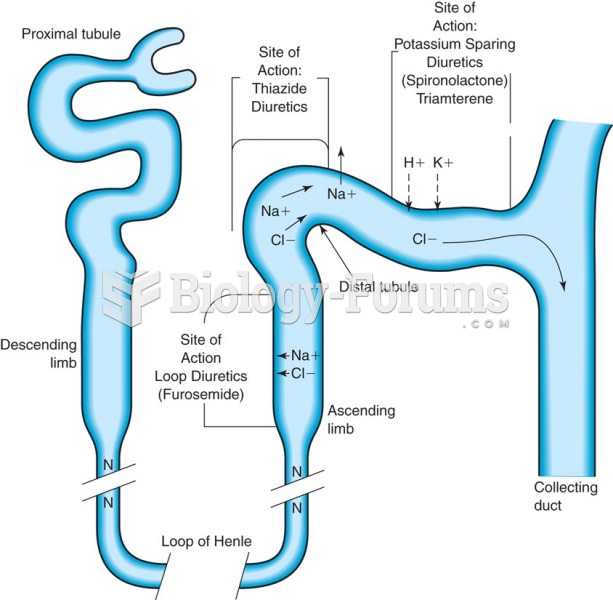|
|
|
Did you know?
Patients should never assume they are being given the appropriate drugs. They should make sure they know which drugs are being prescribed, and always double-check that the drugs received match the prescription.
Did you know?
The FDA recognizes 118 routes of administration.
Did you know?
To combat osteoporosis, changes in lifestyle and diet are recommended. At-risk patients should include 1,200 to 1,500 mg of calcium daily either via dietary means or with supplements.
Did you know?
There are more bacteria in your mouth than there are people in the world.
Did you know?
The average human gut is home to perhaps 500 to 1,000 different species of bacteria.







